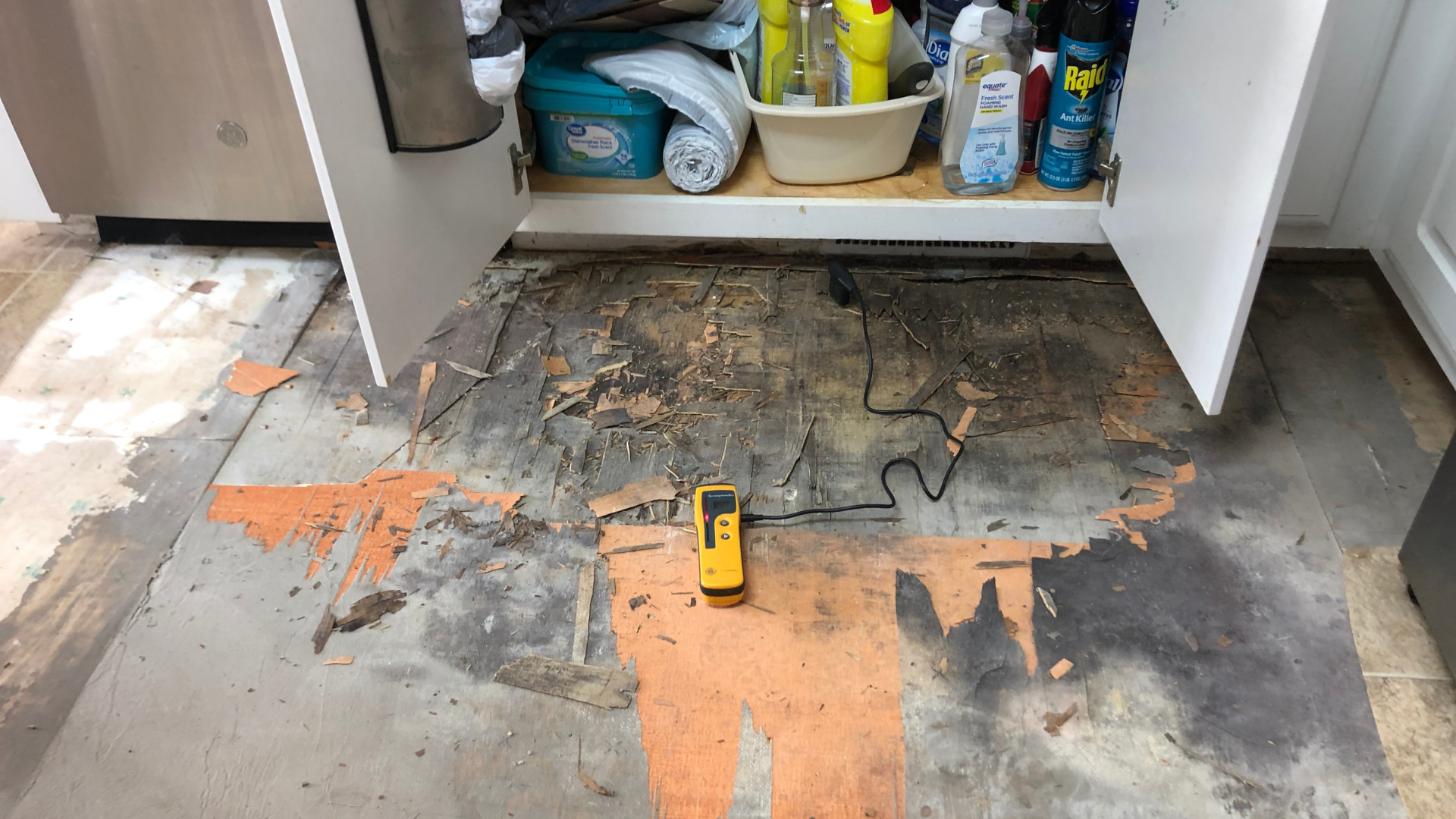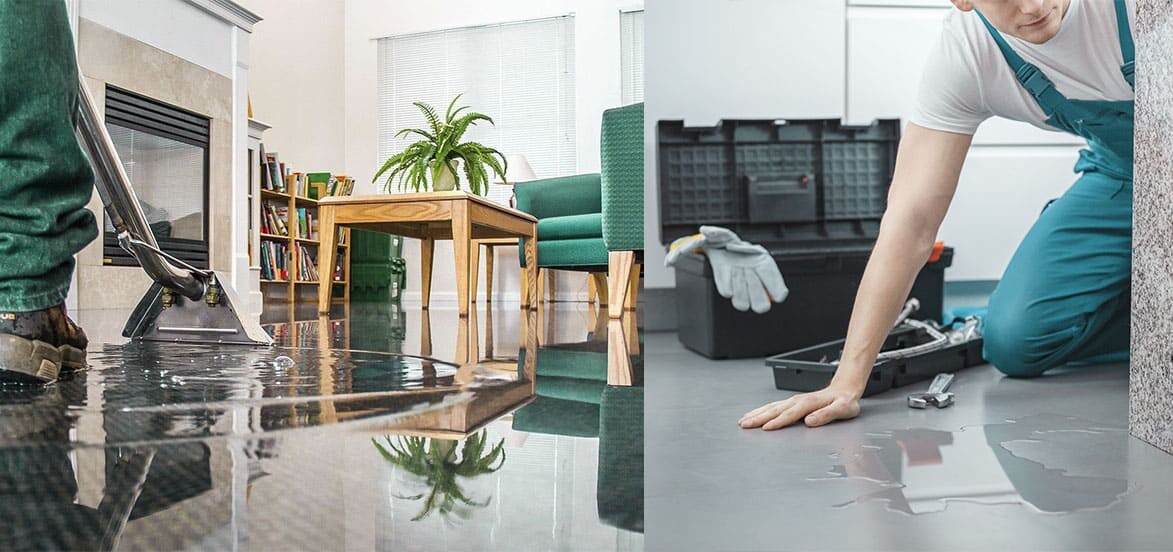A complete walkthrough to Water Damage Restoration services
Wiki Article
Water Damage Restoration 101: Understanding the Process and Price
Water damage can strike unexpectedly, leaving homeowners in a state of complication. Recognizing the repair process is essential for reliable recuperation. From assessing the damage to selecting the right provider, each step affects the general end result and price. Factors such as the kind of water damage and seriousness likewise play a substantial role. What are the particular methods made use of in remediation, and just how can one prepare for possible costs?Sorts Of Water Damage
Water damage can occur from different sources, each offering distinct challenges for restoration. The three key kinds of water damage are classified based upon contamination levels: tidy water, grey water, and black water. Clean water originates from sources like busted pipes or rainwater, posturing minimal health and wellness threats. Gray water, that includes wastewater from sinks or cleaning equipments, consists of impurities that may trigger pain or disease if consumed. Black water, the most hazardous classification, comes from sewage or floodwaters, having harmful microorganisms and virus. Each type demands details restoration methods and safety and security steps to efficiently attend to the damage and minimize health dangers. Recognizing these distinctions is essential for home owners and specialists associated with the water damage remediation procedure.Preliminary Evaluation and Examination
A thorough first assessment and inspection are important action in the water damage remediation process. This stage begins with a professional evaluating the level of the damage, identifying the resource of the water intrusion, and identifying the kind of water included - Water Damage Restoration. Specialists utilize specific tools to measure dampness degrees in different products, such as walls, floorings, and furnishings. In addition, they assess architectural stability and prospective carcinogen, including mold and mildew growth. The findings from this examination notify the remediation strategy, assisting needed activities and resource allotment. Exact documentation of the damage is crucial for insurance cases and future recommendation. Generally, this initial assessment lays the foundation for efficient reconstruction, making sure a comprehensive feedback to the particular circumstance handy

Water Extraction Methods
Following the first assessment, effective water extraction techniques are utilized to minimize damage and prevent more problems. These strategies involve making use of specific tools such as industrial-grade vacuum cleaners and submersible pumps. The choice of approach depends upon the quantity of water present and the sort of products influenced. For standing water, completely submersible pumps are normally made use of for fast elimination, while vacuums are excellent for removing water from carpetings and furniture. Furthermore, advanced techniques like water removal floor coverings may be used for hard-to-reach locations. The objective is to remove as much water as possible, minimizing the possibility for mold development and structural damage. Prompt and reliable water removal is necessary in the total water damage reconstruction procedure.Drying and Dehumidification Process
Once the water extraction is total, the drying and dehumidification procedure ends up being essential to bring back the damaged area. This stage commonly uses industrial-grade dehumidifiers and air moving companies to properly reduce dampness levels. The dehumidifiers attract moist air, removing excess humidity, while air moving companies distribute air to accelerate evaporation. Monitoring devices is frequently made use of to track humidity and temperature level levels, making sure suitable drying out problems. The period of this process can differ depending on the level of the water damage and ecological variables. It is important to completely dry all affected products, consisting of walls, floor covering, and home furnishings, to stop mold development and structural damage. Correct execution of this action is critical for an effective repair result.Cleaning Up and Disinfecting Afflicted Areas

First Analysis and Examination
Prior to starting any kind of reconstruction efforts, a thorough first assessment and assessment of the affected locations are vital for efficient cleaning and sanitizing. This procedure entails determining the level of water damage, figuring out the source of the water invasion, and examining the materials affected. Inspectors commonly try to find indicators of mold and mildew growth, architectural stability problems, and harmed personal belongings. The assessment also includes examining dampness levels utilizing specialized tools to assure no surprise water pockets remain, as these can cause further issues. Recording the findings is vital for preparing the following actions in the restoration process. A thorough first assessment enables remediation specialists to develop a targeted approach for reliable cleansing and disinfecting, inevitably reducing damage and health and wellness risks.Cleaning Up Techniques and Products
Efficient cleansing and disinfecting of water-damaged areas need a selection of products and techniques customized to the certain products affected. For permeable surface areas like drywall and carpeting, extraction methods are vital to get rid of excess moisture, complied with by deep cleaning with specialized cleaning agents. Non-porous materials such as ceramic tile or metal can be cleaned utilizing commercial-grade cleansers that properly remove impurities. Heavy steam cleaning is one more reliable strategy, especially for carpetings and furniture, as it makes use of heats to eliminate germs and mold. In addition, environmentally friendly products are increasingly prominent for their safety and efficiency. Inevitably, choosing the ideal cleaning methods and products not only ensures instant cleanliness yet additionally help in protecting against additional damage and health and wellness hazards connected with water breach.Sanitization and Disinfection Techniques
When attending to water damage, correct sanitization and sanitation approaches are necessary to guarantee the security and health of the afflicted atmosphere. After first cleaning, surfaces have to be treated with proper anti-bacterials to eliminate microorganisms, mold, and microorganisms that prosper in damp conditions. Usual techniques consist of the usage of EPA-approved chemical anti-bacterials, which can be used with spraying or wiping methods. Additionally, ultraviolet (UV) light systems can successfully sanitize areas by neutralizing bacteria without harsh chemicals. The option of approach commonly depends on the kind of products impacted and the extent of contamination. Eventually, extensive sanitization not only restores a secure living space however additionally assists protect against future wellness risks connected with sticking around wetness and mold growth.
Repairs and Restoration Options

Factors Influencing Restoration Prices
The extent of water damage directly influences the repair sets you back homeowners can expect to incur. Factors such as the resource of the water, the duration of direct exposure, and the damaged materials greatly influence rates. For example, tidy water damage from a damaged pipeline is generally much less expensive to bring back contrasted to damage created by sewage. In addition, the degree of contamination dictates the requirement for specialized cleaning and disposal solutions, further boosting costs. Geographical area additionally plays a function, as regional labor prices and availability of remediation services can differ. Ultimately, the necessity of the feedback influences costs; quicker treatments normally lead to reduce general costs Water Damage Restoration by avoiding further damage. Recognizing these elements is essential for home owners when approximating reconstruction expensesThe 3 primary kinds of water damage are categorized based on contamination levels: clean water, grey water, and black water. An extensive preliminary assessment and inspection are important steps in the water damage reconstruction process. For standing water, submersible pumps are normally made use of for quick elimination, while vacuum cleaners are perfect for extracting water from carpets and furniture. The level of water damage straight influences the repair costs house owners can anticipate to sustain. Tidy water damage from a busted pipeline is generally much less pricey to restore contrasted to damage caused by sewage.
Report this wiki page